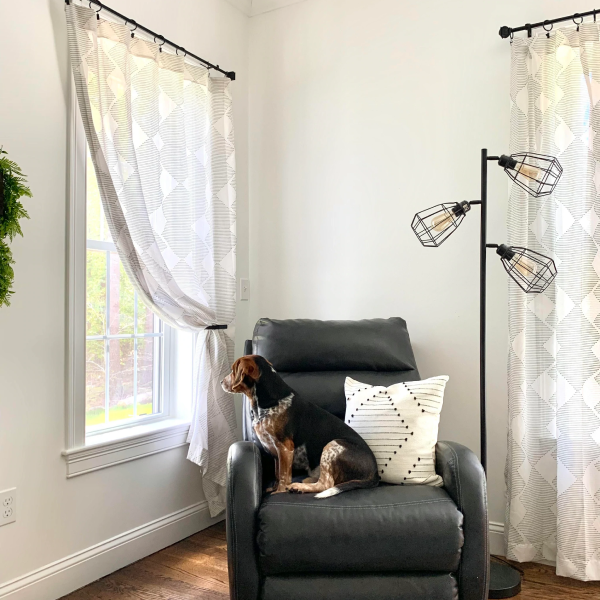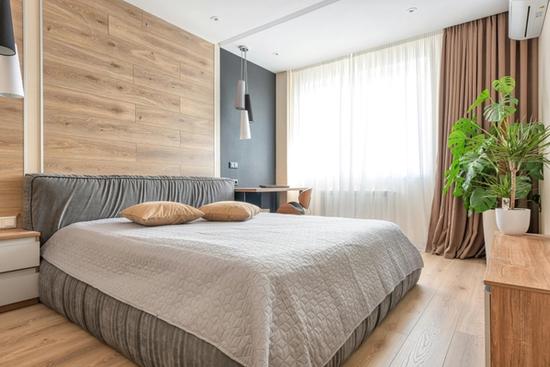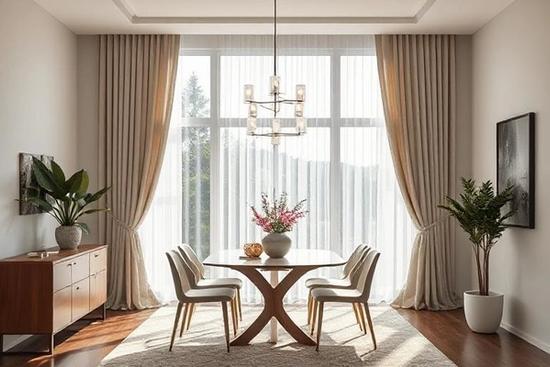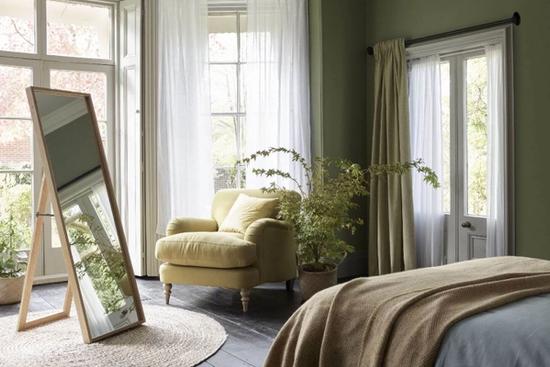How to Hang Window Scarf Curtains
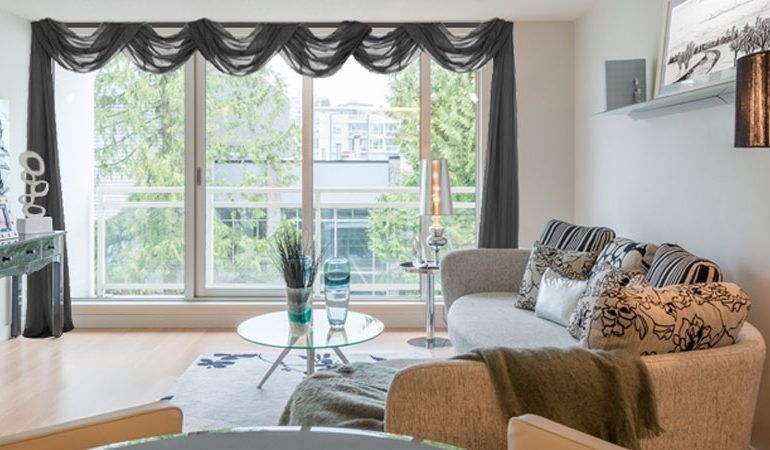
Want to take a room from dull to dreamy? Draping curtains and hanging window scarves is a unique way to draw attention and elevate your room’s style quotient quickly.
Aside from knowing how to hang curtains, there are specific techniques you should use to achieve the perfect window scarf look. If you’ve ever been uncertain about how to drape curtains properly, you’ve come to the right place.
Today, we’ll tell you all you need to know about window scarves and show you how to drape scarves over curtain rods to create a look you’ll love.
What are Window Scarves?
Let’s start with the basics.
Traditional curtains hang across the length of a curtain rod and can cover your windows completely.
A window scarf, on the other hand, wraps over and around a curtain rod. You can use window scarves with or without other draperies or window treatments.
Window scarves, if used alone, allow more light into your space but can limit privacy. Layering window scarves over curtains, blinds or shades adds insulation and light filtering.
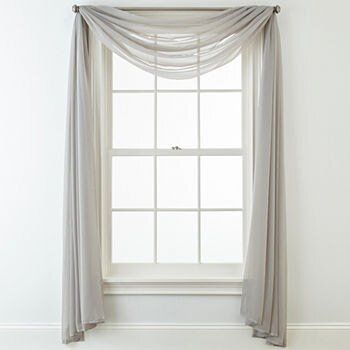
Window scarves differ from valances, which are short accent drapes covering only the top section of a window and conceal curtain rods.
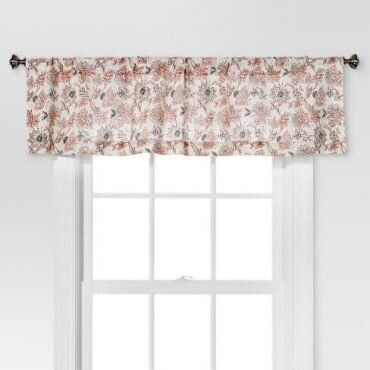
Best Fabrics for Window Scarves
Lightweight sheer fabrics are best for window scarves, but you can use thicker materials for a bolder statement.
Here are some popular fabrics that are ideal for window scarves:
- Organza: A popular fabric that originates from silk, organza is sheer with a slight sheen. This luxurious material can lend a soft, airy look that is versatile for just about any room.
- Chiffon: Like organza but more affordable, chiffon is the way to go if you’re on a budget. This lightweight fabric has a soft shine that softens the look of a room and adds an elegant touch.
- Voile: A delicate, cotton-based fabric. Voile is modern, casual and perfect for living rooms and tall or expansive windows.
- Velvet: If you’re searching for something more luxurious and opaque, try velvet. Velvet is a heavier fabric that creates a more dramatic, stately appearance. Velvet works best in a formal dining room, traditional living room or master bedroom.
Read more: The Best Curtain Fabrics for Your Home
3 Window Scarf Draping Techniques
Let’s cover the three most common window scarf draping techniques found in homes:
- U-Shape
- Asymmetrical
- Layered
1. U-Shape Window Scarves
The easiest way to drape a window scarf is to hang the scarf over the ends of the curtain rod on each side and let it fall into a ‘U’ shape or ‘swag’ in the middle.
This simple look is best for narrow windows but can work in almost any kind of room. All you need is one extra-long curtain panel or a piece of your favorite fabric to make a window scarf.
The scarf can extend to the floor or the bottom of the window sill, depending on the look you want. Floor-length scarves offer a more formal look but can also get in the way in high-traffic areas or rooms where small children play.
Pro-tip: For a wider window, use a longer piece of fabric to create two drapes (two U-shapes) to add more depth (see “Asymmetrical Curtain Draping” below).
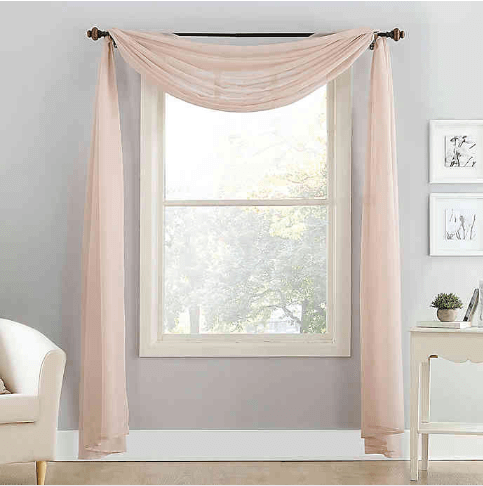
2. Asymmetrical Window Scarves
The asymmetrical curtain draping technique is romantic and ideal for taller windows in master bedrooms, formal rooms or libraries.
To create an asymmetrical look, hang one end of the curtain lower than the other so that the lower end grazes the floor.
Learn more about curtain length rules here.
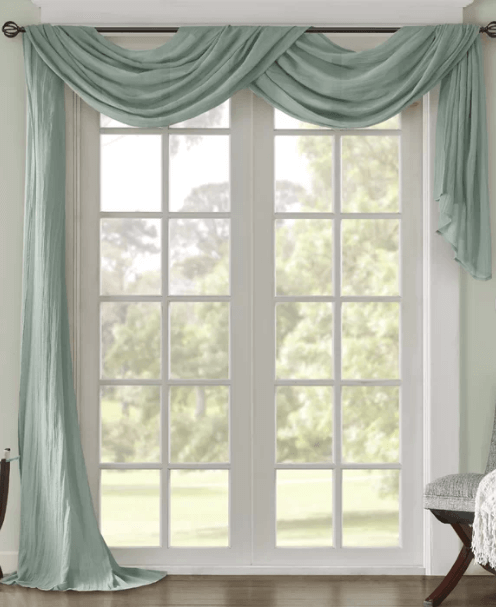
3. Layered Window Scarf Draping
Layered window scarves are beautiful, elaborate and complement formal, bold decor.
Try layering different fabrics of different colors to add depth and dimension to your windows. You can even combine different patterns and colors for more contrast.
To layer window scarves, loop each fabric at different points on the curtain rod, as pictured below.

How to Hang a Window Scarf Over Curtain Rods
Window scarf draping techniques are easy. You can use bulk fabric by the yard or buy standard curtain panels to create window scarves.
Follow these tips to ensure a perfect look.
1. Measure
Use a spool of string to mimic how you’ll drape the scarf. Account for where you want the curtain to fall and the number and depth of swags you wish to create by looping the string around the curtain rod.
Then, cut the string and use a tape measure to determine how much fabric you need.
2. Fold
If you’re using a curtain panel, you can either fold the fabric in half widthwise or create one to three-inch pleats depending on the look you want to achieve. Then, secure the folds or pleats with safety pins.
3. Drape
To create one swag:
- Drape the fabric over one end of the curtain rod.
- Hang the scarf in front of the rod in a ‘U’ shape.
- Drape again over the other end of the rod.
To create multiple swags over wider windows, loop the curtain over the center of the rod. Then drape each side over the end of the curtain rod.
Pro-tip: Try layering two window scarves by draping the “base” scarf once and the top scarf twice.
4. Adjust
Now, adjust the depth of the swags to your liking. Let the fabric fall to the desired length on both sides of the window. Lastly, remove the safety pins to complete the look.
Pro-tip: If you’re hanging full-length window scarves, try adding curtain holdbacks or tiebacks to add a decorative (and functional) touch.
How to Drape Curtains Easily With Kwik-Hang
Now that you know how to hang scarf curtains over rods, you can simplify the rest of the curtain-hanging process with Kwik-Hang.
Kwik-Hang’s no-drill curtain rod brackets make it easy to hang curtains in seconds. The installation process is quick, stress-free and doesn’t require any special tools or measurements.
Just position the brackets to your window frame, tap into place with a hammer and that’s it! You’re ready to drape your window scarves right away.
Give your windows the upgrade they deserve with Kwik-Hang’s affordable and reliable curtain rod brackets and curtain rods.
